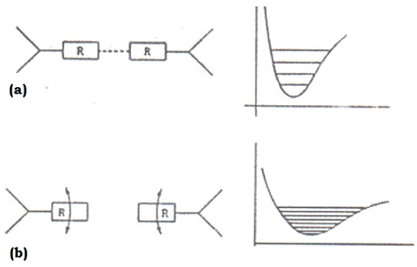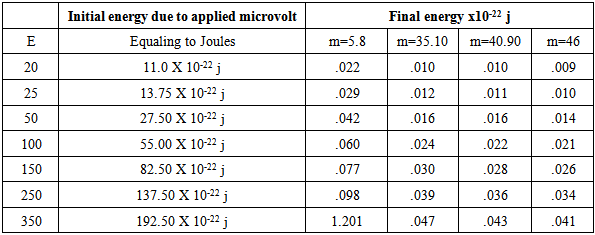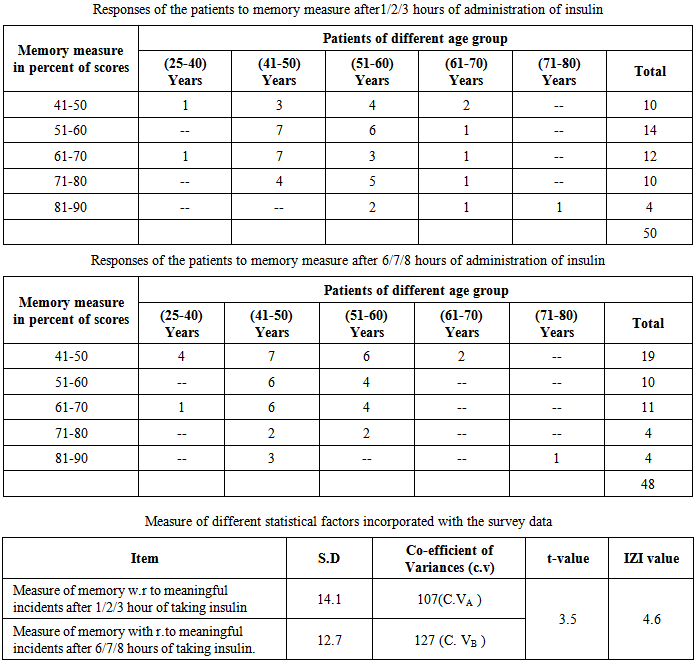-
Paper Information
- Paper Submission
-
Journal Information
- About This Journal
- Editorial Board
- Current Issue
- Archive
- Author Guidelines
- Contact Us
International Journal of Biophysics
p-ISSN: 2168-4979 e-ISSN: 2168-4987
2015; 5(2): 25-30
doi:10.5923/j.biophysics.20150502.01

Role of Insulin / Insulin Receptor in Learning and Memory from the View Point of Protein Vibration
Brajagopal Majumder
Former Chairman, SRC-Tripura, India
Correspondence to: Brajagopal Majumder, Former Chairman, SRC-Tripura, India.
| Email: |  |
Copyright © 2015 Scientific & Academic Publishing. All Rights Reserved.
This work is licensed under the Creative Commons Attribution International License (CC BY).
http://creativecommons.org/licenses/by/4.0/

Exploring the impact of insulin/insulin receptor on learning and memory formation from the view point of protein vibration constitutes the main objective of the paper .Protein vibration due to external stimuli in the form of EEG rhythms and its consequences on learning and memory traces particularly with respect to diabetic patients may be considered as exemplary objective of the paper. It has been pointed out by the author that learning and memory formation depend on molecular weights of protein. These proteins vibrate in different forms due to external stimuli in accordance with their molecular weights. .However, a number of experiments had been conducted by different authors on mechanism of functioning of insulin/insulin receptor in brain. Hence, it has been proposed by the author differently that diabetic patient suffer from loss of memory due to the presence of insulin of light molecular weights in their brain. The theoretical results of the author are found compatible with those obtained from the field survey conducted by the author.
Keywords: CNS insulin, Lesions, Ischaemia, Apo E-4 allele, GLUT, Protein Vibration, Signaling pathway etc
Cite this paper: Brajagopal Majumder, Role of Insulin / Insulin Receptor in Learning and Memory from the View Point of Protein Vibration, International Journal of Biophysics , Vol. 5 No. 2, 2015, pp. 25-30. doi: 10.5923/j.biophysics.20150502.01.
Article Outline
1. Introduction
- The brain is registered as a target organ for insulin and insulin receptor (IR). It has now been established that insulin in the central nervous system (CNS) exhibits more diverse actions while the primary function of insulin is to regulate glucose homeostasis in some classical peripheral insulin target tissues like adipocyte, muscle and liver. In addition, a direct role of Cns insulin / insulin receptor (IR) in learning as well as insulin receptor (IR) deterioration with brain degenerative dementia (e.g Alzheimer’s disease etc) have raised increasing interest. These attracted the scholars to unfold the cellular and molecular basis for CNS insulin / insulin receptor (IR) action on learning and memory in the context of behavioral, electrophysiological and biochemical studies. It has been pointed out by the scholars of the day that at molecular level, insulin / insulin receptor (IR) participate in regulation of learning and memory through specific signaling pathways. One of these pathways is found to be associated with the formation of long-term memory.It was observed by park et al. (1) that administration of insulin into the 3rd cerebral ventricles of rats which undergone passive avoidance training experiences resulted in higher memory retention levels compared to those rats which were injected saline and heat-inactivated insulin. In this respect some reverse effects were also observed by different scholars. Kopf and Baratti (2) showed that “intraperitoneal (i.p.) injection of insulin without simultaneous administration of glucose which is necessary for maintaining normal glucose levels impaired retention in mice, trained for either habituation learning task or inhibitory avoidance.’’ On the other hand, Kern et al. (3) observed that systemic infusion of insulin under proper maintenance of glucose clamp exhibited significant memory improvement particularly in verbal memory and selective attention.’’Diversified results are observed in case of administration of insulin to human subjects. A cognitive task responding to an auditory stimulus, as observed by kern et al (4) showed negative shift in auditory-evoked potential in specific cortical areas. These are practically thought to be associated with working memory processes. However, Pelosi and Blumhardt (5) held the view that ‘’aged population with impaired memory showed increased latencies and amplitudes in components of auditory-evoked potentials after administration of insulin / insulin receptor.’’ All these suggest that the insulin / insulin receptor (IR) signaling is activated in the early stage of memory formation and this may play role in memory sorting for long-term storage.
2. Insulin or Insulin Receptor and Signalling Pathway
- A good number of scholars conducted experiments on the mechanism of functioning of insulin or insulin receptor (IR). The CNS insulin receptor does function differently from those in classical insulin target tissues. The experimental evidences along with the results of brain specific deletion of insulin receptor clearly indicate that insulin / insulin receptor (IR) contributes significantly to glucose homeostasis. It was also noted by Stochhorst et al. (6) and woods et al. (7) that ‘CNS administered insulin showed a pavlovain conditioning effect on peripheral glucose levels in both humans and animals.’ From all these findings it can obviously be held that the ‘’action of insulin / insulin receptor in the brain is predominantly mediated by its role in neuron-modulations,’’ which is expected to take part in learning and memory formation.With respect to modulation of memory associated neuronal activities wei-Qin Zhao (8) held the view that during learning insulin first binds to the subunit of insulin receptor which in turn causes the activation of tyrosine kinase of the beta-subunit.’’ This activated insulin receptor is expected to be involved in learning and memory formation. Thus it can be held that receptors are excited only at the very outset of stimulation (on receptors) and the others remain non excited when stimulation cease (off-receptors). Still others are excited both at the beginning and at the end of stimulation (on and off receptors). These receptors, however, constitute as sources of constant flow of impulses. These can react with increase or decrease of the frequency of imputes under the action of external stimuli. Henceforth, the signals (impulses) pass on to respective insulin which in turn is engaged in different purposes concerning the necessity of the individuals.Recent studies on the role of insulin / insulin receptor (IR) in the functions of central nervous system including learning and memory at synaptic and molecular levels have significantly advanced our knowledge. In spite of these, many substrates of insulin and its interactions with insulin receptor (IR) and other receptors along with kinase molecules directly associated with learning experience are yet to be explored. scholars are conducting in-depth studies at cellular and molecular levels with respect to specific deletions of insulin and insulin receptor (IR) in the brain.
3. Methodology
- In view of the above discussion, the author attempts to examine the problem from the view point of one of the author’s suggestion (9) of ‘’protein vibration’’, responsible for recalling the learnt events. Here protein vibration is caused by external stimuli. However, protein also vibrates due to electrostatic force generated in it. The suggestion of protein vibration lies in the fact that when an impulse gets to a neuron, the structural change of the membrane lipid occurs and during this phase of structural change, vibrations occurring in protein as expected to be responsible for memory measure. The more stable the protein is, more is the memory. The corresponding author in a recent paper (9) shows that recalling the learnt event depends on the number of frequencies of vibration in protein.The present paper attempts to focus on the underline mechanism of protein vibration with the application of four basic types of EEG rhythms of amplitudes 20 to 100 and 150 to 350 microvolt’s and frequencies in the range of 0.5 to 30 cycles per second. It is hypothesized that by measuring the difference energy between the initial (External stimuli in the form of EEG rhythms) and the final level, it would be possible to correlate the happenings related to learning events and memory traces in the brain. The problem of protein vibration responsible for memory was considered in the light of the solution of the standard form of Schrodinger Equation. Inserting the potential energy function v=1/2 kr2 in one dimensional Schrodinger Education
 | (1) |
 | (2) |
 | (3) |
 | (4) |
|
|
 and after necessary conversion in S.I units, Vibration energies of the concerned insulin’s have been evaluated. These are tabled in Table No.3.
and after necessary conversion in S.I units, Vibration energies of the concerned insulin’s have been evaluated. These are tabled in Table No.3.
|
|
4. Results and Discussion
- i) C.VA for 1 hour < C.VB for 6 hours. This means C.VA for 1 hour is more consistent than C.VB for 6 hours.ii) Tabulated t 05 to = 1.96 and t01 = 2.58Since calculated value of t=3.5 is much greater than t=0.05 and to.01, it is highly significant and it is concluded that there is significant differences in measure of memory between two conditions (memory measured after 1/2/3 hours of taking insulin and 6/7/8 hours of taking insulin).iii) Tabulated value of Z due to two tailed test are 1z1 = 2.58 at 1% and 1z1 =1.96 at 5% level of significance. The calculated value of 1z1 = 4.6 is much higher than the above two values. It is highly significant at both levels of significances. Hence, we conclude that there is significant difference in two levels of memory measure. Other findings of the statistical approach The study was conducted with 50 diabetes patients of age group 32-73. Among these 25 were male and 25 were female.(i) From educational point of view, the patients are of Class VIII standard to graduate level. They belong to various professions like govt. job, teacher, house wives etc.(ii) Before attacking of diabetes, the memories of the patients are as follows:Below average = 6 persons securing below 40% scores.Average = 28 persons securing (40-50%) scores.Out standing = 16 persons securing above 60% scores.(iii) From the view point of Physical fitness of the patients after attack of diabetes, 30 patients responded that they feel physically weak, while 20 patients kept silence in this respect.(iv) In respect of taking exercise 15 patients replied that they walk regularly for 45 minutes to 1 hour, 5 patients replied that they undertake yoga regularly. On the other hand, the rest 30 do not undertake any sort of exercise.(v) Out of 50 patients of age group (32-73) years, 13 may be categorized as patients of type-II diabetes. The memory score as revealed from the study lie within (41-50)% for 10 (ten) patients, (51-60)% for 2 patients even after 6 hour of taking insulin. One patient of age group (71-80) years attained memory score in the (61-70)% after 1 hour of taking medicine. However, it comes down to the range (41-50)% after 6 hours of taking insulin. This proves that type II diabetic patients are more depended on taking insulin (protein) for their surveillance and their memory level does not improve except for few exceptional cases where it shows memory rises after taking insulin. However, in case of other patients, the memory comes down after 6/7/8 hours of taking insulin.Thus it can be held that injection of insulin which is basically a protein may increase the memory in case of human beings too who are suffering from diabetes. This is found to be in parity with findings of Louis and Josefa Flexner (10) in 1963 with injections of protein inhibitor puromycin in mice. They found that learning was effective from day 1 to 3 in blocking long-term memory in mice. The author also verified these findings with his theoretical approach of ‘’Protein Vibration’’ in measuring memory level (11). The nature of memory level in both the cases is found of to be compatible.
 | Figure 1. Loss of memory of diabetic patient having insulin of light molecular weight |
 | Figure 2. Vibration energy spacing of protein molecules |
5. Conclusions
- From the above discussion of biophysical approaches, it may now be held that insulin / insulin (IR) participates in regulation of learning and memory. From the field study it is found that interruption of insulin production and IR activity causes deficits in learning and memory formation. This is found to be happened in our field study concerning type II diabetic patients. Thus frequent vibrations as shown in Fig. 2 (b) may occur in type II diabetic patients having light insulin of approximately 5.38 KD molecular weights. However, this study does not constitute any Alzheimer’s patient, from which the role of abnormal insulin / insulin receptor (IR) levels and their activities could also be verified with other studies. Future in-depth study with administration of insulin at cellular and molecular level by using modern technique like EEG, MIR etc may open vista of knowledge to the scholars concerning the role of insulin / insulin receptor in the brain.
ACKNOWLEDGEMENTS
- The author thanks Dr. U. C. De, Asstt. Professor, Department of Chemistry for valuable discussion. The author also thanks Samar Sen for undertaking computer works.
 Abstract
Abstract Reference
Reference Full-Text PDF
Full-Text PDF Full-text HTML
Full-text HTML


